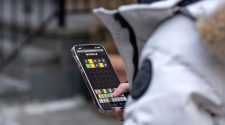Educators today face the reality that students are growing up in a world of technology and will eventually work in a technology-dominated world. How can we as educators embrace and incorporate technology to help prepare our students for the future?
Technology is being updated constantly, and the technology that is being used daily today may be obsolete by 2030. Therefore, students need to learn a variety of skills that can be applied to different applications.
What is TPACK?
In 2009, Matthew Koehler and Punya Mishra of Michigan State University introduced a new way of categorizing lessons and ensuring they incorporate technology, pedagogic and content knowledge, otherwise known as TPACK. This form of organizing lessons doesn’t require any specific piece of equipment or software. Instead, it allows teachers flexibility and encourages their own personal knowledge of technology to shine through.
How can you apply the organization of TPACK to your own lessons? Take a look at what you are doing in your lesson. What is the desired outcome? Is there a piece of technology or software that you can include into your lesson? Can you extend your learning outcomes to provide a more comprehensive unit that includes technology?
From no-tech to low-tech and beyond

Let’s look at an example in Minnesota. A third-grade standard requires students to look at the living organisms in and around the school. Students take a clipboard, record some of the organisms they see during their walk and write down their observations. They then share their findings with their class and move on to the next lesson the following day. A TPACK lesson could incorporate technology in the form of capturing pictures of the living organisms and digitally recording their observations in a digital science journal using SeeSaw for younger grades or Adobe Creative Cloud for older students.
Most students already have phones that can take pictures and record audio, and many schools have tablets or laptops for students to use.
Students also could make a video advertisement showcasing their findings and then share their presentations with the class or post their work on a class blog. Other schools can do the same, letting students compare the living organisms in their environment with those at different schools.
The benefits of adding technology
Introducing technology into this lesson not only teaches the basic outcomes desired in the introduction lesson, but also allows students a chance to interact with other students from different schools, work on digital citizenship skills and be creative in their presentations while working with technology.
Incorporating technology doesn’t need to be intrusive in a lesson, but whatever you can do as a teacher to adapt to the new technology needs of students is a step toward our digital future. Teachers who wish to go further can choose from several edtech options that can expand the learning experience across a variety of subjects.
Brianne Waste is a 7th-grade pre-algebra teacher for South Washington County School District in Minnesota. She is pursuing her master’s degree in technology education.















